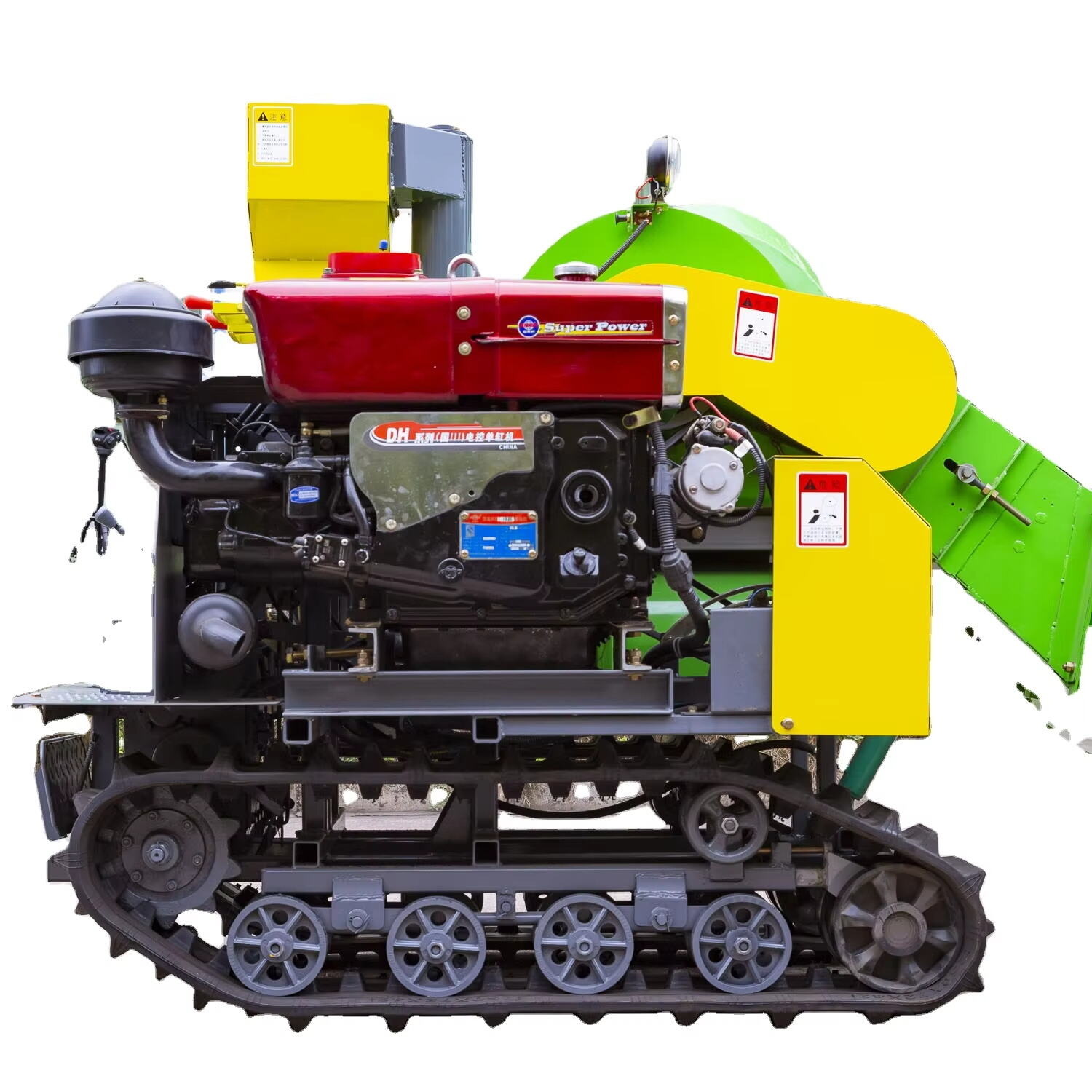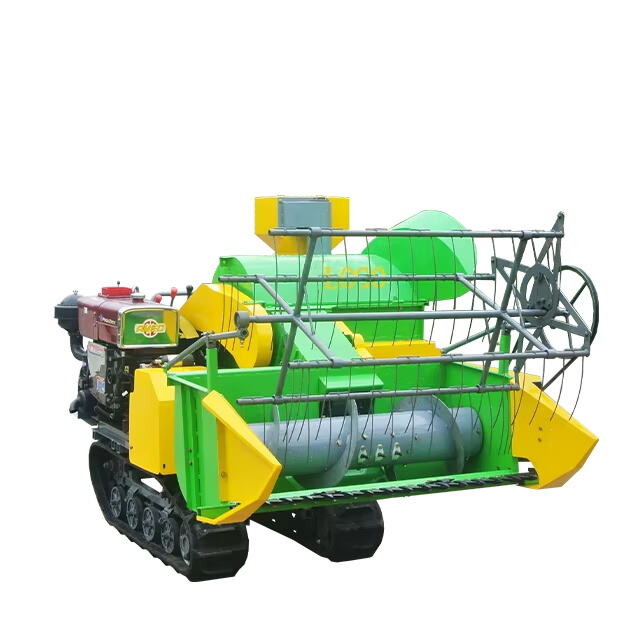Terrain Conditions Dictate Harvesting Efficiency
Choosing the right equipment for harvesting soybeans isn’t just about engine power or size—it’s about matching machine type with land condition. The terrain of your soybean field plays a critical role in determining the long-term efficiency, maintenance demands, and operational costs of your harvesting equipment. Whether you manage a small family farm or a large agricultural enterprise, aligning your terrain with the proper machinery helps maximize yield with minimal setbacks.
Farmers who operate on hilly, muddy, or loose-soil fields often face a different set of challenges than those with flat, dry terrain. This is where understanding the pros and cons of different soybean harvesters—especially the distinction between wheeled and tracked models—becomes crucial. It’s not just a mechanical decision; it’s an economic and operational strategy that directly affects productivity and equipment longevity.
Key Features of Soybean Harvesters
Engine Power and Efficiency
Most modern soybean harvesters come equipped with high-efficiency engines designed for extended use in variable field conditions. Regardless of the terrain, engine reliability remains a core factor for operational success. In tracked and wheeled versions alike, the engine must handle heavy loads while maintaining fuel economy. This ensures consistent harvesting even in fields that are uneven or waterlogged.
Engine performance becomes especially vital in fields with variable soil compaction. For example, tracked soybean harvesters distribute weight more evenly, reducing soil compaction and allowing the engine to operate more efficiently on soft terrain. On the other hand, wheeled versions tend to be faster on firm and even surfaces, making better use of engine torque.
Header Design and Crop Compatibility
The header is the front attachment that interacts directly with soybean plants, and its adaptability can affect yield. Wide headers on both tracked and wheeled soybean harvesters allow for high-capacity collection, reducing the number of passes required. Adjustable height and automatic terrain-following systems ensure minimal crop loss, particularly on uneven land.
Headers optimized for soybean crops often come with features like flex platforms or draper systems. These help accommodate uneven terrain and ensure that pods near the soil surface are collected efficiently. Choosing the right header is equally important as selecting the right harvester type.
Comparing Wheeled and Tracked Machines
Maneuverability and Speed
Wheeled soybean harvesters are known for their superior speed and agility on firm ground. Their lower rolling resistance makes them ideal for large, open, and flat fields where fast harvesting is essential. They often have tighter turning radii, making them easier to maneuver at the end of rows.
In contrast, tracked machines sacrifice some speed for enhanced stability and control. They are excellent on sloped or wet fields where wheels might slip or sink. The even distribution of weight over a larger surface area allows tracked soybean harvesters to glide over soft terrain without creating deep ruts.
Soil Impact and Field Preservation
Soil compaction is a growing concern in sustainable agriculture. Tracked soybean harvesters offer a significant advantage by distributing weight evenly across the ground. This preserves soil structure, which is especially valuable in wet or loose-soil regions.
Wheeled machines, while efficient on dry and stable ground, may increase soil pressure, leading to long-term damage if used in soft or muddy fields. However, modern wheel systems with flotation tires can mitigate this issue to some extent. For farmers focused on regenerative agriculture, tracked options are often the better investment.

Adaptability for Various Farm Sizes
Compact Machines for Small Farms
Smaller farms can benefit from compact soybean harvesters that offer versatility without sacrificing power. Whether tracked or wheeled, compact models are easier to store, transport, and maintain. Tracked compact units are particularly beneficial for fields with irregular shapes or mixed terrain, allowing for tight turns and smooth navigation.
Wheeled compact models remain a favorite among traditional farmers due to their straightforward maintenance and lower upfront cost. They are often preferred for operations where the land is dry and relatively flat year-round.
High-Capacity Models for Industrial Farms
Large-scale operations demand higher throughput and longer working hours. Tracked soybean harvesters shine in these scenarios when dealing with large, water-retaining fields. Their ability to stay stable in damp or slippery conditions without stalling makes them valuable for continuous operation.
Wheeled high-capacity machines are better suited for dry regions where terrain poses fewer challenges. Their high speed and fuel efficiency make them ideal for covering vast areas quickly. In climates with predictable weather, wheeled systems can drastically cut down harvest time.
Maintenance and Operating Costs
Repair Frequency and Parts Availability
Tracked systems generally have more complex undercarriage mechanisms, which can mean more frequent inspections and potentially higher maintenance costs. However, they also tend to experience less structural damage from uneven ground, reducing the risk of long-term mechanical failure.
Wheeled soybean harvesters often benefit from easier maintenance routines. Parts are usually more available and repairs more straightforward. This can be advantageous in rural areas with limited access to specialized repair facilities.
Fuel Consumption and Long-Term Investment
Tracked harvesters typically consume more fuel due to their heavier frame and increased friction with the ground. However, this is often offset by their superior performance in tough conditions, which can reduce overall harvest time and delays.
Wheeled models are generally more fuel-efficient, especially when used under optimal conditions. Over time, this can result in significant cost savings, particularly in areas where diesel costs are high.
Environmental Considerations
Reducing Soil Erosion and Runoff
Farmers focused on sustainability should consider how their machinery affects the landscape. Tracked soybean harvesters provide better traction and less disruption to soil layers, reducing runoff and erosion. They are often favored in environmentally sensitive regions or farms near water bodies.
Wheeled versions can cause more localized soil damage, especially when operated in wet conditions. However, when used responsibly with the correct tires and field practices, they can still be part of a sustainable harvesting strategy.
Emissions and Compliance Standards
Modern soybean harvesters—whether tracked or wheeled—are increasingly designed to meet global emissions standards. Tracked versions, due to their heavier build, may emit slightly more CO₂ per hour of operation. However, they often spend fewer hours in the field due to fewer traction issues.
Wheeled models, with their lighter structure, may be better suited to farms looking to minimize fuel use and emissions under stable weather conditions. Choosing the right model involves balancing environmental goals with operational needs.
Budget and Financing Options
Upfront Investment vs. Long-Term ROI
Tracked soybean harvesters usually come with a higher upfront cost due to their advanced engineering and materials. However, for farmers with challenging terrain, this investment often pays off in saved time and preserved field integrity.
Wheeled machines are often more affordable initially and deliver a fast return on investment in ideal conditions. The lower cost also makes them more accessible for small to mid-size farms transitioning from manual or older equipment.
Government Grants and Support
In many regions, agricultural subsidies or financing programs are available for farmers upgrading to environmentally-friendly or high-efficiency harvesting equipment. Tracked soybean harvesters that reduce soil compaction may qualify for conservation grants.
Wheeled models might receive support under modernization or expansion programs. Understanding local funding opportunities can help farmers make strategic purchasing decisions aligned with their long-term goals.
FAQ
What are the main differences between wheeled and tracked soybean harvesters?
Wheeled harvesters offer higher speed and agility on dry, firm land, while tracked machines provide better stability and reduced soil compaction on wet or uneven terrain.
Is a tracked soybean harvester worth the extra investment?
Yes, if you operate on soft, muddy, or sloped terrain, the added stability and soil protection often justify the higher cost.
Can I use wheeled harvesters in wet conditions?
It’s possible, but not ideal. Wheeled machines may cause soil rutting and have reduced traction. Tracked harvesters are generally better suited for such environments.
How often should soybean harvesters be serviced?
Routine servicing is recommended after every harvest season, with additional checks during peak operations. Tracked systems may require more frequent undercarriage inspections.

